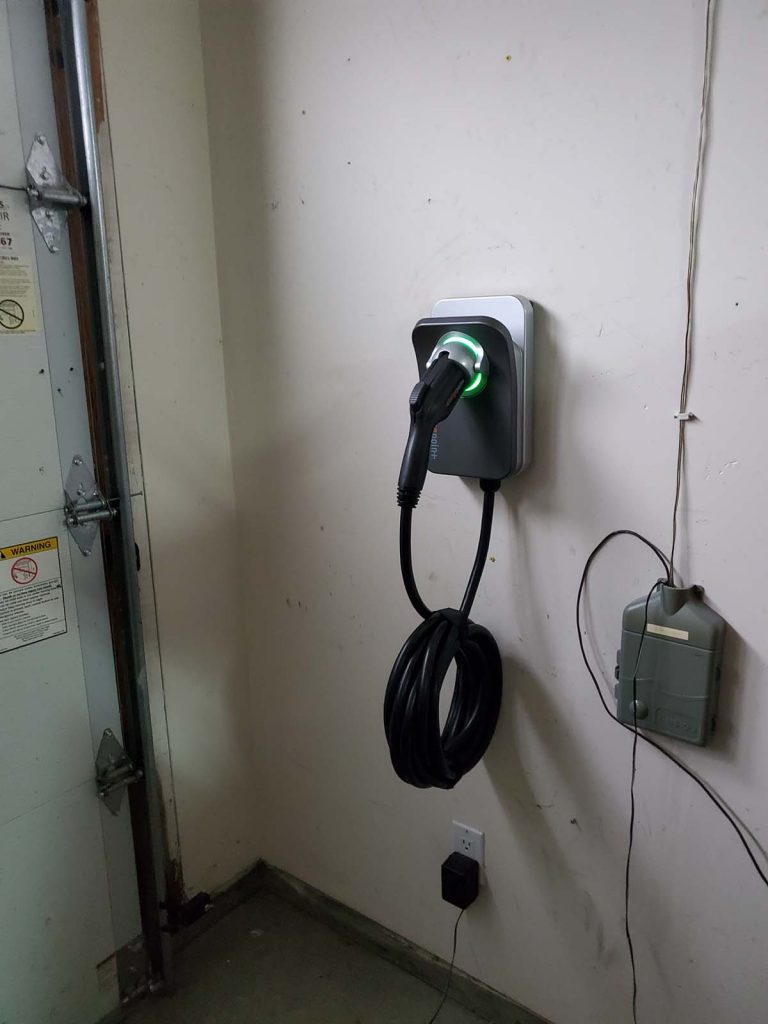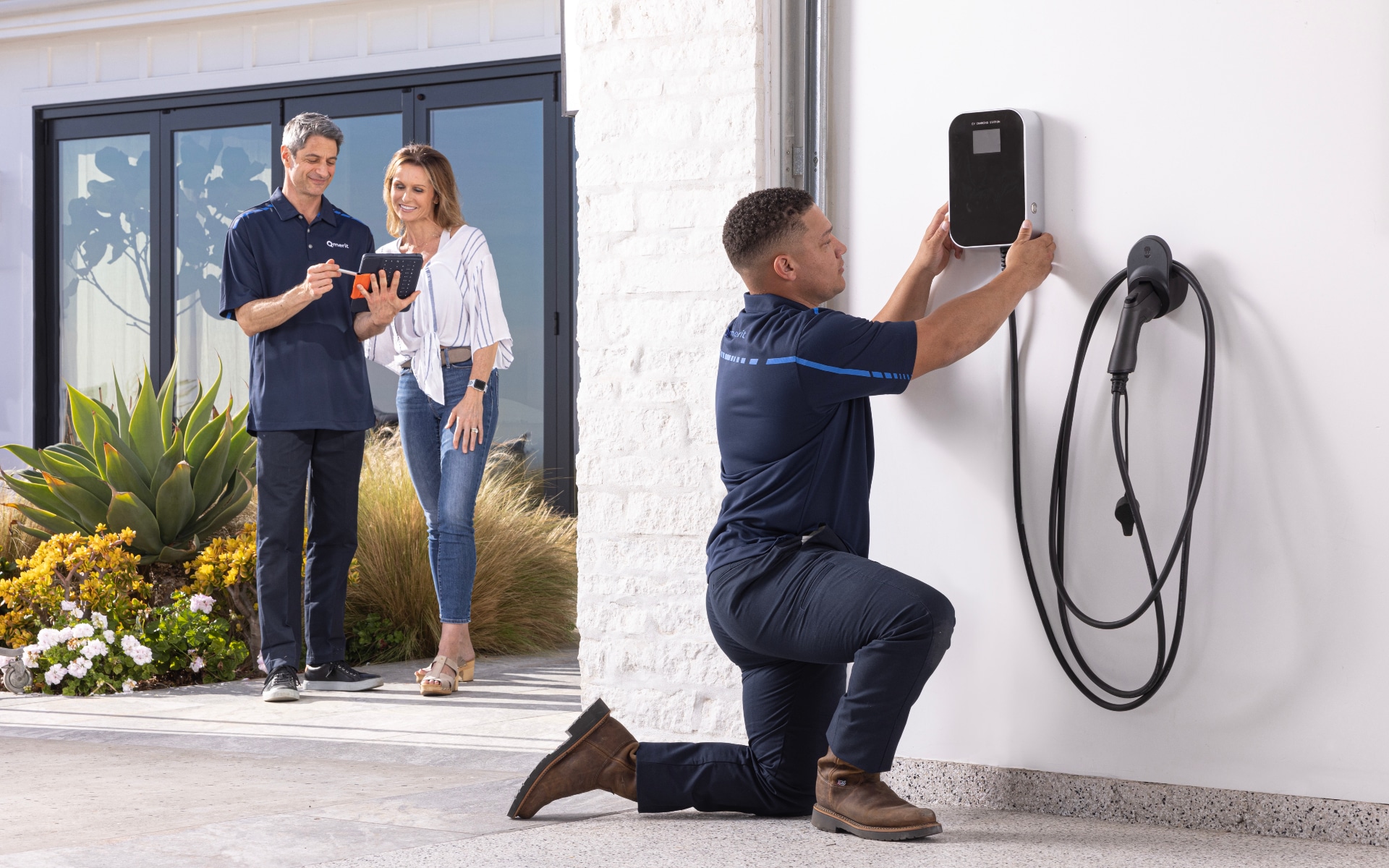Installing an EV charger at home can seem like a daunting task, but it doesn’t have to be. If you’re considering taking this step towards a greener lifestyle, you’re not alone.
The convenience of charging your electric vehicle at home not only saves you time but also enhances your eco-friendly credentials. Imagine waking up every morning to a fully charged car, ready to hit the road. Sounds great, right? This guide will walk you through the process, breaking it down into simple, easy-to-follow steps.
You’ll learn what you need, how to get it done, and why it’s worth it. Ready to make your home EV-friendly? Let’s dive in!

Credit: makeitright.ca
Choosing The Right Ev Charger
Installing an EV charger at home involves selecting the right model and ensuring proper electrical setup. Consider charger compatibility with your vehicle and consult a professional for safe installation. Choose a spot near your electrical panel for convenience and efficiency.
Choosing the right EV charger for your home is crucial. The right choice ensures efficient and safe charging. It also affects your daily convenience. There are different types of chargers with unique features. Understanding these will guide you in making the best choice.Level 1 Vs Level 2 Chargers
Level 1 chargers use a standard 120-volt outlet. They are easy to install and require no special equipment. Charging with Level 1 is slow. It adds about 3-5 miles of range per hour. Ideal for those who drive short distances daily. Level 2 chargers offer faster charging. They use a 240-volt outlet. Installation requires professional help. Level 2 chargers provide 10-60 miles of range per hour. Suitable for those who need quicker charges.Power Requirements
Understanding your home’s power capacity is vital. Level 1 chargers need less power. They work with existing outlets. Level 2 chargers demand more. They might need an electrical upgrade. Check your home’s electrical capacity first. Consult an electrician if unsure. This ensures safe and efficient charging.Smart Features
Some chargers offer smart features. These include Wi-Fi connectivity and mobile apps. They allow remote monitoring of charging. Smart features help schedule charging times. They can reduce electricity costs. Opt for smart chargers for more control. They offer convenience and efficiency. Make sure the features match your needs.
Credit: qmerit.com
Assessing Your Home’s Electrical System
Installing an EV charger at home requires a look at your electrical system. This step ensures safety and efficiency. Your home’s electrical system needs to support the charger. You must check the electrical capacity and choose the right location for installation.
Checking Electrical Capacity
Start by checking your home’s electrical capacity. Look at the main panel and circuit breaker. Your home must have enough capacity to handle the charger. Most chargers need a 240-volt circuit. This circuit powers the charger without overloading the system. If your panel lacks capacity, consider upgrading it.
Identifying Suitable Installation Locations
Find the best spot for your EV charger. The garage is a common choice. It keeps the charger close to your vehicle. Check the distance from the main panel. A shorter distance reduces installation costs. Avoid areas exposed to weather elements. Choose a dry, safe location for the charger. Accessibility is key. Ensure you can easily connect and disconnect your vehicle.
Gathering Necessary Permits
Installing an EV charger at home? You need the right permits. This step is crucial to avoid legal issues. It ensures your installation is safe and compliant. Understanding the permit process can save time and frustration. Let’s dive into the details.
Local Regulations
Each locality has unique rules for EV charger installations. Check with your local authority for specific requirements. Some areas might have strict zoning laws. Others may have lenient guidelines. Knowing these rules is the first step in the permit process.
Application Process
Start the permit application by contacting your local building department. They provide the necessary forms and guidelines. Fill out the forms carefully. Attach any required documents, like site plans or electrical diagrams. Submit your application with any applicable fees. Processing times vary, so apply early to avoid delays.
Hiring A Qualified Electrician
Hiring a qualified electrician is a crucial step in installing an EV charger at home. This decision affects not only the efficiency of your installation but also the safety of your household. You might wonder, how do you ensure you’re choosing the right professional for the job?
Finding Certified Professionals
Start your search by looking for electricians who are certified and experienced in EV charger installations. Ask friends or family for recommendations. Check online reviews and ratings to gauge customer satisfaction.
Local directories and professional organizations often list certified electricians. Look for those who have specific experience with EV chargers. A knowledgeable electrician can offer insights that might save you money or prevent future issues.
Cost Considerations
Cost is always a factor, but it shouldn’t be the only deciding element. Request quotes from multiple electricians to compare pricing. This ensures you’re getting a competitive rate.
Consider what the quote includes. Does it cover parts and labor, or just the installation? Clarify any additional costs upfront to avoid surprises.
Think about the long-term value. A slightly higher upfront cost might come with better service or a warranty. Are you willing to pay a bit more for peace of mind?
Remember, hiring a qualified electrician isn’t just about the immediate task. It’s about ensuring your EV charger is safe, efficient, and ready to meet your needs long-term. Would you compromise on safety for a lower price?
Installation Process
Installing an EV charger at home is a smart move for EV owners. It allows convenient charging and saves time. Understanding the installation process is crucial for safety and efficiency. This guide walks through the steps to install your home EV charger.
Mounting The Charger
Choose a location near your vehicle’s parking spot. Ensure it’s close to your electrical panel. The wall should be sturdy enough to hold the charger. Use screws and brackets provided in the installation kit. Follow the manufacturer’s instructions for secure mounting.
Connecting To Power Supply
Hire a licensed electrician for connecting the charger to power. This prevents electrical hazards and ensures compliance with local codes. Run wires from the main electrical panel to the charger. Double-check connections and tighten them securely.
Testing And Safety Checks
Once installed, test the charger to confirm it works properly. Plug in your vehicle and observe the charging process. Check for any unusual noises or errors. Conduct safety checks to ensure all connections are tight and secure. Verify the charger’s safety features are functioning correctly.

Credit: www.youtube.com
Post-installation Tips
Ensure your EV charger works efficiently by checking all connections after installation. Test the charger with your vehicle to confirm proper function. Securely mount all equipment and keep the area clean for safety and easy access.
After successfully installing an EV charger at home, you might think the hard part is over. However, post-installation care is crucial to ensure your charger operates smoothly and lasts long. Consider these practical tips to maintain and troubleshoot your EV charger effectively.Routine Maintenance
Regular maintenance can significantly extend your charger’s life. Start by inspecting the charging cable for any wear or damage. A simple visual check once a month can prevent future headaches. Keep the charging station clean. Dust and debris can affect its performance. A quick wipe with a dry cloth can do wonders. Ensure the connections are tight. Loose connections can lead to inefficient charging. Take a moment to check all connectors periodically.Troubleshooting Common Issues
Encountering a problem can be frustrating, but many issues have simple fixes. If your charger isn’t working, first check the power source. Is it switched on? Sometimes, a tripped circuit breaker is the culprit. Is your car not charging as expected? Confirm that the charging cable is fully plugged into both the charger and your vehicle. A loose connection might be all that’s causing the issue. Seeing unexpected error messages? Consult your charger’s manual or the manufacturer’s website. They often have step-by-step guides for resolving common problems. Maintaining and troubleshooting your EV charger might seem overwhelming at first. However, with these tips, you’ll be well-equipped to handle any situation. What steps will you take today to ensure your charger stays in top shape?Maximizing Charger Efficiency
Installing an EV charger at home boosts efficiency by ensuring your electric vehicle is always ready to go. Follow easy steps, like choosing the right charger type and finding a suitable installation spot. Proper setup guarantees safe and fast charging, making your home charging experience hassle-free.
Maximizing the efficiency of your home EV charger is crucial for saving both energy and money. It’s not just about plugging in and waiting for the battery to fill up. By understanding the optimal charging times and adopting energy-saving practices, you can make the most out of your charging setup. Let’s dive into some practical tips that can transform your charging routine into a smart, efficient process.Optimal Charging Times
Choosing the right time to charge your electric vehicle can make a significant difference. Many utility companies offer lower rates during off-peak hours, typically at night or early morning. Imagine setting your charger to start at midnight when electricity rates drop. This simple adjustment can lead to noticeable savings over time. Have you ever wondered how much more you could save by charging at the right time?Energy-saving Tips
Energy efficiency doesn’t stop at timing. Consider using a smart charger that adjusts power levels based on your vehicle’s needs. These devices can optimize energy usage by reducing power during peak demand times. Also, keep your EV battery between 20% and 80% charged to preserve battery health and efficiency. Finally, an organized charging setup can prevent energy loss—keeping cables neatly arranged and away from heat sources helps maintain their performance. What small changes can you make to enhance your charging efficiency today? By implementing these tips, you can enjoy the benefits of a well-optimized charging routine, ultimately extending your EV’s lifespan and reducing your energy bills.Conclusion
Installing an EV charger at home is simpler than it seems. First, choose a charger that fits your needs. Next, check your home’s electrical capacity. A professional can ensure safe installation. Remember, charging at home saves time and money. It offers convenience and peace of mind.
Keep your electric vehicle ready for any journey. Enjoy the benefits of clean energy. A smart investment for the future. Start your journey towards a greener lifestyle. Make home charging your everyday habit. Charge smart, live better.
